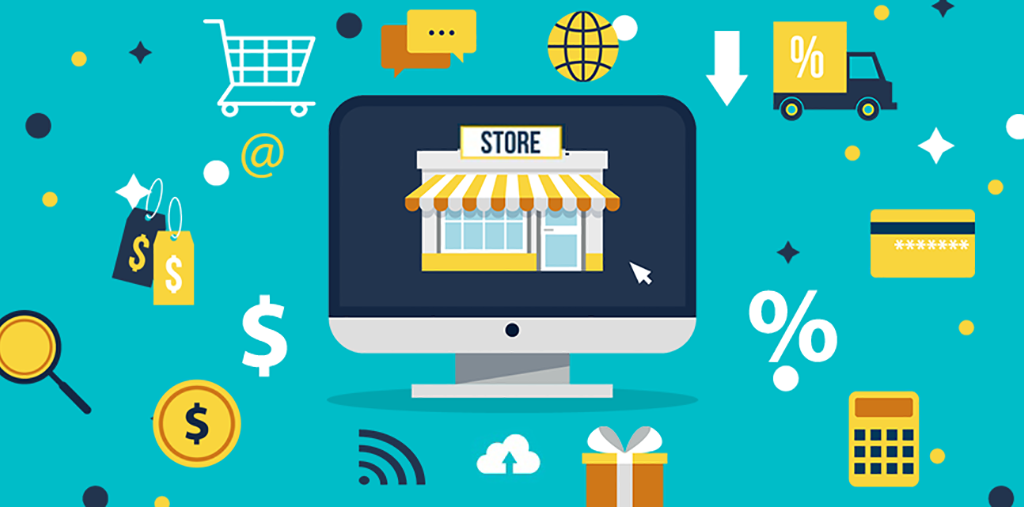In the ever-evolving landscape of the digital age, e-commerce has emerged as a thriving frontier for entrepreneurs and businesses alike. As we step into the year 2023, the world of online retail is more promising and competitive than ever before. Whether you’re an aspiring entrepreneur looking to turn your passion into profit or an established business seeking to expand your digital footprint, the opportunities in the e-commerce space are vast and enticing.
In this dynamic era, the ability to launch and sustain a successful e-commerce website demands a strategic blend of innovation, adaptability, and a deep understanding of consumer behavior. It’s a journey that involves mastering the art of online marketing, optimizing user experiences, and staying ahead of rapidly changing trends and technologies. To navigate this landscape successfully, you need a well-crafted roadmap.
This guide aims to be your trusted navigator, providing you with the insights, strategies, and best practices necessary to not only launch an e-commerce website in 2023 but also thrive in an environment where competition is fierce and consumer expectations are higher than ever. From conceptualization and planning to design, marketing, and ongoing optimization, we will explore every facet of creating and managing a successful e-commerce venture in the digital age.
So, if you’re ready to embark on this exciting journey and unlock the potential of e-commerce in 2023, let’s dive in and discover the key steps and strategies to launch your e-commerce website with confidence and set the stage for a prosperous online business.
1. e-commerce website Market Research:
Understand your target audience, their needs, and preferences. Research your competitors to identify gaps and opportunities.
Market Research is the foundational pillar of any successful e-commerce venture in 2023. It involves a comprehensive analysis of the target market, consumer preferences, and industry trends. By delving deep into market research, businesses can identify their niche, understand customer needs, and pinpoint potential competitors. Leveraging data-driven insights, companies can tailor their product offerings, pricing strategies, and marketing campaigns to meet the demands of their audience effectively. Moreover, staying updated with market dynamics is crucial in this ever-evolving digital landscape, ensuring businesses remain agile and capable of adapting to changing consumer behaviors. In essence, market research is the compass guiding e-commerce businesses toward informed decision-making and sustainable growth.
2. e-commerce website Business Plan:
Create a detailed business plan outlining your goals, budget, revenue model, and marketing strategy
A robust Business Plan is the roadmap that charts the course of an e-commerce venture in 2023. It serves as a strategic blueprint outlining goals, financial projections, operational processes, and marketing strategies. This critical document not only defines the business’s mission and vision but also determines its feasibility and sustainability. By setting clear objectives and timelines, businesses can allocate resources efficiently, secure funding, and make informed decisions. In a rapidly evolving digital landscape, a well-crafted business plan acts as a compass, helping navigate challenges, capitalize on opportunities, and ultimately, achieve long-term success in the highly competitive e-commerce industry. It’s the foundation upon which a thriving online business is built.
3. Choose Your Niche:
Select a niche or product category that aligns with your interests and has demand in the market.
Selecting the right niche is pivotal when launching an e-commerce website in 2023. A niche defines the specific market segment or product category a business targets. To succeed, businesses must carefully evaluate market demand, competition, and their own expertise and passion. A well-chosen niche allows a business to stand out, cater to a specific audience’s needs, and build brand authority. In a crowded digital landscape, niche selection is the first step towards differentiation and customer engagement. It’s a strategic decision that influences product selection, marketing strategies, and long-term growth potential, making it a cornerstone of e-commerce success in the modern era.
4. Domain and Hosting:
Choose a memorable domain name and reliable hosting provider. Ensure your site’s speed and uptime are excellent.
Securing the right domain name and reliable hosting are critical components of launching an e-commerce website in 2023. A domain name represents your online identity, so it should be memorable, reflect your brand, and be easy to spell. Choosing a reputable hosting provider ensures your website is accessible, responsive, and secure for users. Fast loading times and minimal downtime are essential for delivering a positive user experience. Moreover, robust hosting solutions can handle the traffic and transactions expected from an e-commerce site. Together, your domain and hosting form the backbone of your online presence, impacting performance, SEO, and customer trust.
Popular Domain and Hosting Providers :
- GoDaddy
- Bluehost
- HostGator
- SiteGround
- Namecheap
- DreamHost
- A2 Hosting
- InMotion Hosting
- Wix
- Hostinger
5. Platform Selection:
Pick an eCommerce platform that suits your needs. Popular options include Shopify, WooCommerce (for WordPress), and Magento.
Choosing the right ecommerce platform is a pivotal decision when launching an online store in 2023. E-commerce platforms like Shopify, WooCommerce (for WordPress), Magento, and BigCommerce offer varying features, scalability, and customization options. The choice should align with your business’s size, goals, and technical requirements. User-friendly interfaces and robust inventory management are crucial for efficient operations, while responsive design ensures a seamless shopping experience across devices. Security and payment gateway integration are non-negotiable for protecting customer data and facilitating transactions. Moreover, consider the platform’s SEO capabilities and app integrations to boost visibility and streamline operations. Your platform is the foundation upon which your e-commerce success will be built.
6. e-commerce Website Design:
Invest in a user-friendly and mobile-responsive design. A clean, visually appealing website is crucial for user engagement.
In the digital realm of e-commerce in 2023, website design plays a pivotal role in attracting and retaining customers. A visually appealing, intuitive, and mobile-responsive design enhances user experience and builds trust. It should align with your brand identity and product offerings while prioritizing easy navigation, clear product presentation, and a streamlined checkout process. High-quality images and compelling product descriptions are essential for converting visitors into buyers. Moreover, prioritize fast loading times and secure browsing to reduce bounce rates and improve SEO rankings. An aesthetically pleasing and functional design is your storefront in the digital world, making it a cornerstone of e-commerce success.
7. Product Listings:
Create detailed, high-quality product listings with compelling descriptions, images, and pricing.
Effective product listings are the lifeblood of a successful e-commerce venture in 2023. They serve as the bridge between your offerings and potential customers, making it crucial to create compelling and informative listings. Each product should feature high-quality images from multiple angles, detailed descriptions that highlight features and benefits, and clear pricing information. Organize products into categories and utilize tags for easy navigation. Implement a robust search functionality to help users find what they’re looking for quickly. Additionally, encourage customer reviews and ratings to build trust and enhance the shopping experience. Well-optimized product listings are essential for driving conversions and building a loyal customer base in the competitive e-commerce landscape.
8. Payment and Security:
Set up secure payment gateways and implement SSL encryption for customer data protection.
9. Inventory Management:
Implement a robust inventory management system to track stock levels and prevent overselling.
10. SEO Optimization:
Optimize your site for search engines (SEO) to improve its visibility on search results pages.
11. Content Marketing:
Develop a content strategy with blog posts, product guides, and videos to attract and engage your audience.
12. Social Media Presence:
Create and maintain active social media profiles to promote your products and interact with customers.
13. Customer Support:
Offer excellent customer service through various channels, including live chat, email, and phone.
14. Marketing and Promotion:
Use digital marketing strategies like PPC advertising, email marketing, and social media advertising to drive traffic and sales.
15. Analytics:
Monitor website traffic and sales using tools like Google Analytics. Adjust your strategies based on data insights.
16. Mobile Optimization:
Ensure your site is mobile-friendly, as a significant portion of eCommerce traffic comes from mobile devices.
17. User Experience (UX):
Continuously improve the UX by gathering feedback and making necessary adjustments to enhance the shopping experience.
18. Shipping and Returns:
Offer transparent shipping options and a clear return policy to build trust with customers.
19. Legal Compliance:
Comply with all relevant laws and regulations, such as GDPR for data protection and eCommerce laws in your region.
20. Customer Feedback:
Encourage and gather customer reviews and feedback to build credibility and improve your products and services.
Remember that success in eCommerce often takes time and continuous effort. Regularly assess your strategies, adapt to market changes, and stay customer-focused to increase your chances of success.











